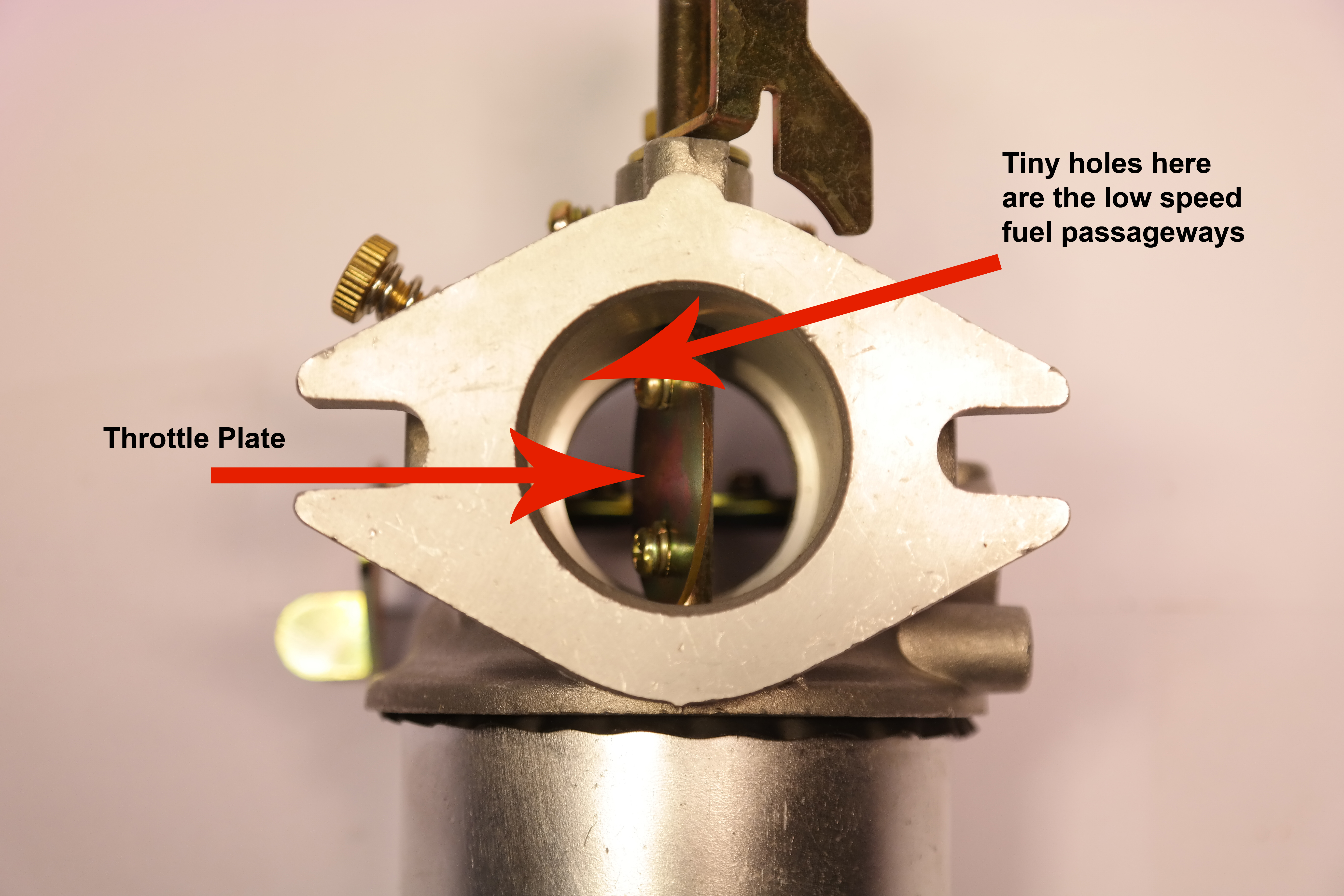Carburetors. How do they work? Part 2
Carburetor Parts and Function.
In Carburetors. How do they work? Part 1 we gave an overview of the function of the carburetor and the parts involved.
In this part 2 we will explain what each part in a carburetor does so you can have a better understanding of your carburetor for your Kohler K series engine.

Let's begin on the outside of the carburetor.
Throttle Lever and Throttle Plate: The throttle lever controls the opening and closing of the throttle plate. The throttle plate regulates how much air fuel mixture is fed into the engine's intake.
Atmospheric Vent: This vent hole maintains atmospheric pressure in the carburetor bowl. Without this vent fuel would not be able to be forced through the emulsion tube and into the engine.
Choke Lever: The choke lever controls the opening and closing of the choke plate. The choke plate controls how much air is fed into carburetor. You want to keep it open when the engine is running to maintain the proper air fuel ratio. On cold starts you want to close the choke to make your fuel mixture "rich" which means "more fuel less air". This richer mixture helps in starting when the engine is cold. After your engine starts you want to open the choke back up.
Emulsion Tube: The emulsion tube is a passageway with holes in it. Fuel travels from the carburetor bowl, and through different fuel passages in the body of the carburetor. Think of it as a Highway with many exits for fuel to take.
High Speed Adjustment Needle: This adjustment needle is screwed in from the top of the carburetor and it goes through the emulsion tube. This needle regulates the size of the passageways in the emulsion tube as a method to adjust how much fuel enters the air/fuel mixture when the throttle is wide open.
Venturi: The venturi is a restriction in the bore of the carburetor. When air is passing through the carburetor, and it hits a "bottle neck"; an area that is smaller in size than where it is entering; the air speeds up to pass through the restriction while maintaining the same volume of air. As this occurs an area of low pressure is created at the venturi, and brings the fuel up through the carburetor bowl and into the venturi where it is mixed with the incoming air. This is known as Bernoulli's principle.
Low Speed Adjustment Needle: This needle regulates the size of an orifice that leads to holes in the carburetor bore that are located behind the the throttle plate (on the engine side). This is for when the throttle plate is closed and your engine is in a low idle condition.
Throttle Stop/Low Idle Adjustment Screw: This screw regulates how much the throttle plate closed when the throttle lever is pushed down all the way. It is simply a screw that goes in and out on the other side.


Now let's look at the inside of the carburetor:

The Needle Seat: is where the fuel enters the carburetor bowl from the fuel tank. The inside is rounded to offer a mating surface for the Float Needle.
Float Needle: The float needle has a rubber type tip. It drops and rises with the aid of the float to open and close the needle seat. This allows fuel to enter the carburetor and then stops its flow when the bowl is full.
Float: The float is a hollow ring that literally floats on top of the fuel in the bowl. As fuel is used by the engine, the float lowers with the fuel lever and allows the float needle to drop and let more fuel into the bowl. As the fuel lever increased, the float rises up and pushes the float needle into the hole in the needle seat. This stops the fuel from entering the bowl.
Float Pin: The float pin provides a smooth pivot point for the float.
Bowl Gasket: The bowl gasket has a baffle on one end to keep the atmospheric vent clear and open. The remainder of the gasket helps seal fuel into the bowl and prevents leaking.
In Part 3 we will explain some common troubleshooting techniques and situations we have encountered with older carburetors.
Thank you for saving the tractors!
Recent Posts
-
A Letter From the Owner of iSaveTractors
Dear Friends and Fellow Tractor Enthusiasts, After over a decade of serving the vintage small engine …Jun 5th 2025 -
Rebuild your Old Kohler K Series Engine vs Buying New
Why Rebuilding Your Old Kohler K-Series Engine Beats Buying a New Mower or Engine In today’s throwaw …May 13th 2025 -
iSaveTractors vs Cheap Parts from Amazon
Why iSaveTractors Parts Outshine the Cheap Alternatives on Amazon When it comes to restoring and mai …May 12th 2025
